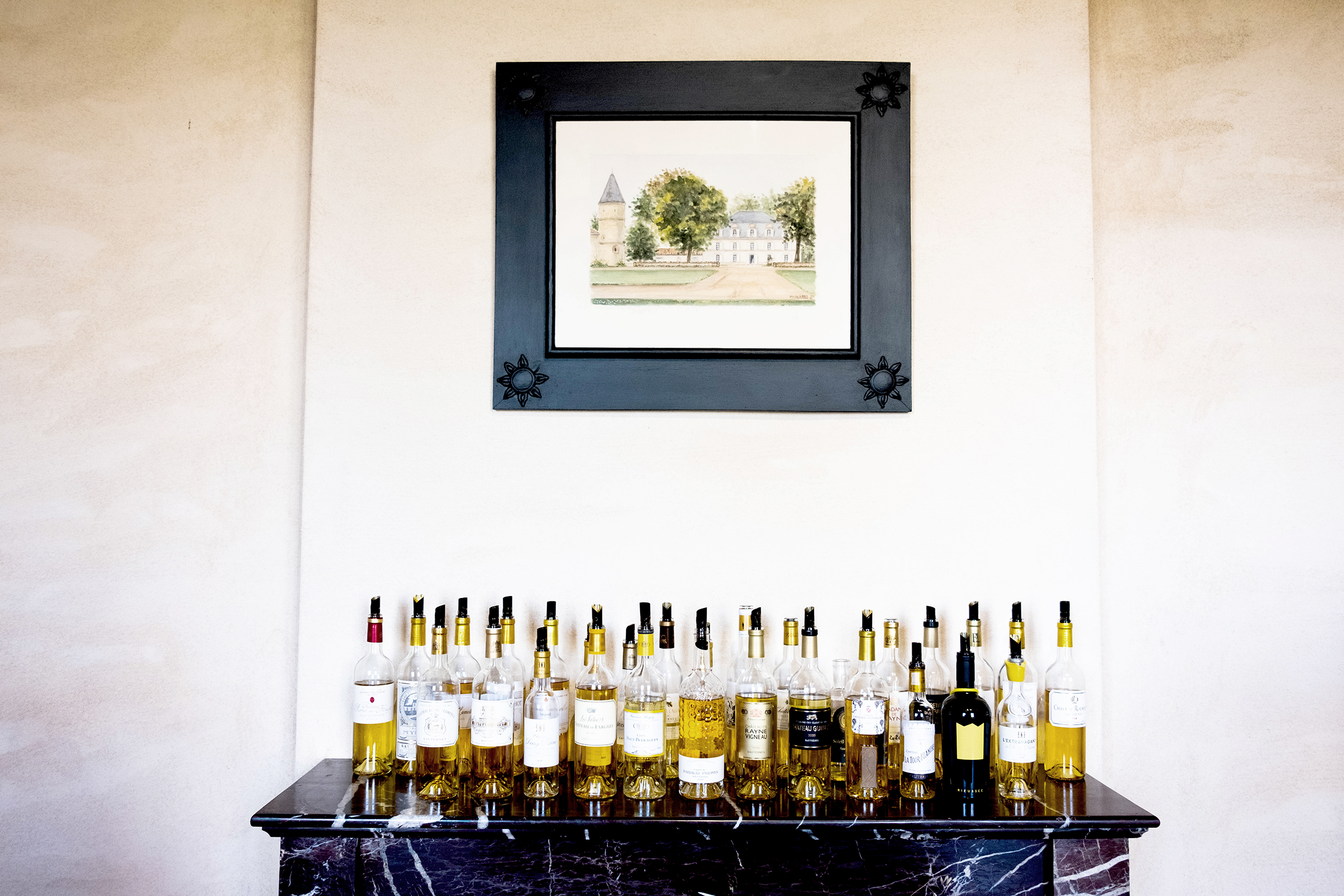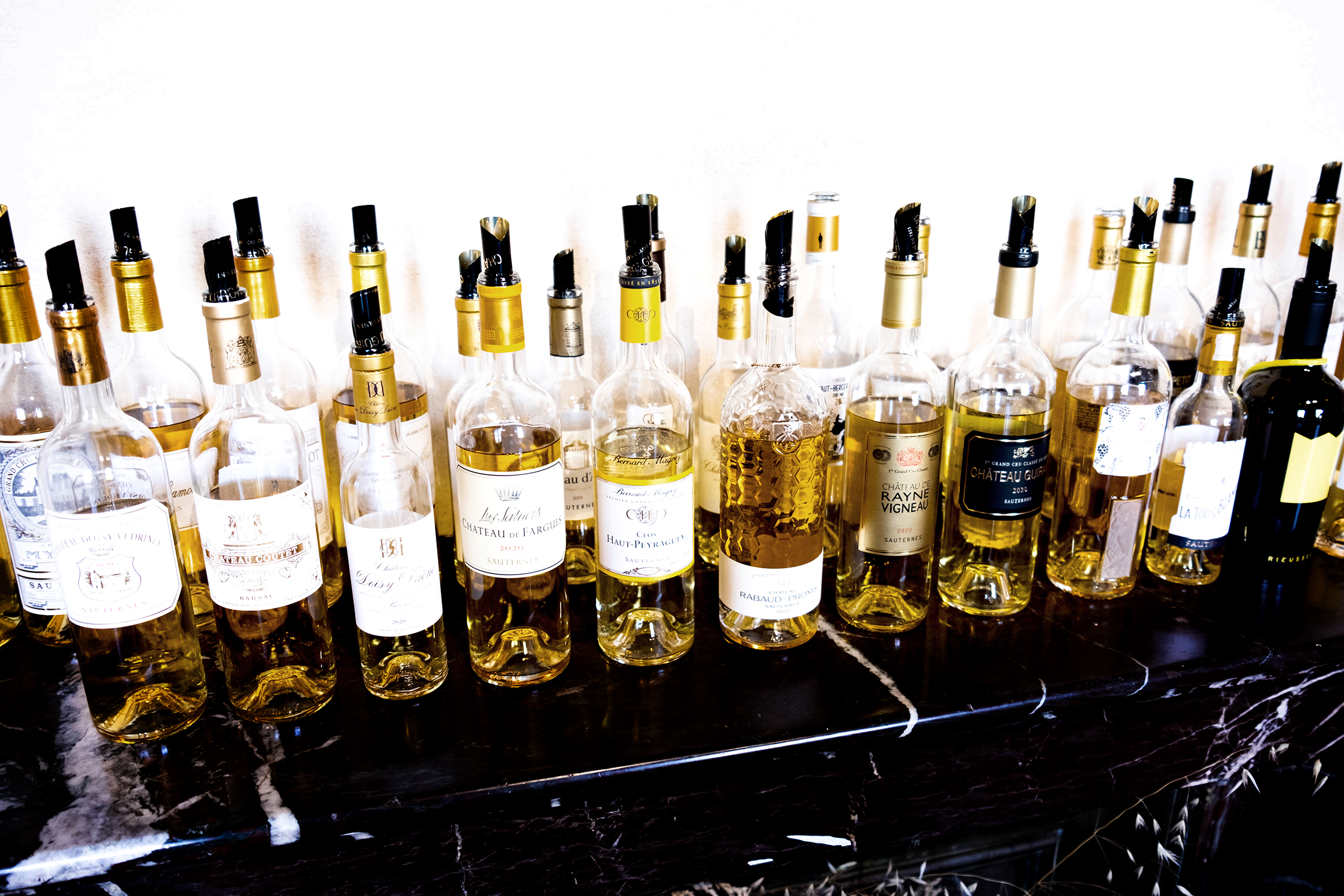20th Apr 2023
Sauternes’ 2020s are less concentrated and rich than more consistently great vintages. These are lighter, fresher styles, which still maintain a lot of layers and terroir signatures. For this reason, this is a vintage that Bordeaux lovers who do necessarily gravitate toward big, rich, sweet wines will want to seek out.

Lighter, Fresher
August and early September 2020 were relatively dry months, which is beneficial for making high-quality dry wines but can be nerve-racking for sweet wine producers. Botrytis needs humidity. In an annual vintage report on 2020, co-authored by Professors Axel Marchal, Valérie Lavigne, and Laurence Geny of Bordeaux University’s Institute of Vine and Wine Science, it was noted, “The development of Botrytis cinerea was delayed due to drought conditions in early September, followed by rainfall which impaired the concentration of the grapes, and left only short windows in which to harvest botrytized grapes.”
Fortunately, the weather turned during the third week of September with persistent showers. The botrytis spread quickly, but there was too much rain at that stage for the berries to shrivel and become concentrated.
“Sauternes winegrowers became worried and responded in various ways,” Marchal, Lavigne, and Geny commented in their report. “Some resigned themselves to picking insufficiently concentrated grapes on a large scale, abandoning production of the first wine in 2020. Others decided to take a gamble and wait for the concentration to increase, at the risk of losing their entire crop. With heavy rainfall in early October caused by storm Alex, the situation in the vineyards turned critical, although cool temperatures fortunately prevented the development of fungal diseases, which would signal the end of all hopes. The rare periods of dry weather provided a window in which to harvest a few grapes, particularly around 12 October.”

Storm Alex—the powerful storm that descended on Bordeaux on October 2nd, forcing the harvest hands of red wine producers across Bordeaux—threatened Sauternes and Barsac producers with the possibility of losing everything.
Sauternes expert Bill Blatch commented, “All the quality estates hung on until the rain stopped on 7th (October), opening the vintage’s third picking window as the vineyards dried out and especially as the northerly winds came back from 15th providing the most ideal conditions of the harvest. In four or five short days, the best of the vintage was picked, producing a good half of their crop, most finishing by the 20th.”
Those producers that waited until mid to late October went on to produce impressive wines, demonstrating a good amount of botrytis character.
Generally speaking, the wines are less concentrated and rich than more consistently great vintages. These are lighter, fresher styles, which still maintain a lot of layers and terroir signatures. For this reason, this is a vintage that Bordeaux lovers who do not necessarily gravitate toward big, rich, sweet wines will want to seek out. Even better, the 2020s from Sauternes and Barsac should give a lot of pleasure within just a few years and yet have the intensity and harmony to cellar a few decades, in the best cases.
As for yields, however, the amount of wine produced is fairly low. “The final blends of the Grands Vins ended up tiny,” said Bill Blatch. “From 0 hl/ha (e.g., Sigalas) to many at 3-6 (e.g., Lafaurie) and the luckiest ones at 10-11 (e.g., many Barsacs).”
Special thanks to Bill Blatch for organizing this comprehensive tasting of the 2020s in Sauternes in February this year.
–
Article & Reviews by Lisa Perrotti-Brown MW
Photography by Johan Berglund

PRODUCERS IN THIS ARTICLE
> Show all wines sorted by scoreMore articles

Cathiard Vineyard New Releases
02nd May 2024
3 tasting notes

Bordeaux 2023 Preliminary Vintage Report and Reviews from Barrel
29th Apr 2024
56 tasting notes

2021 Bordeaux in Bottle and A Modest Proposal
24th Apr 2024
599 tasting notes

Pilcrow’s New Releases
18th Apr 2024
7 tasting notes
Show all articles